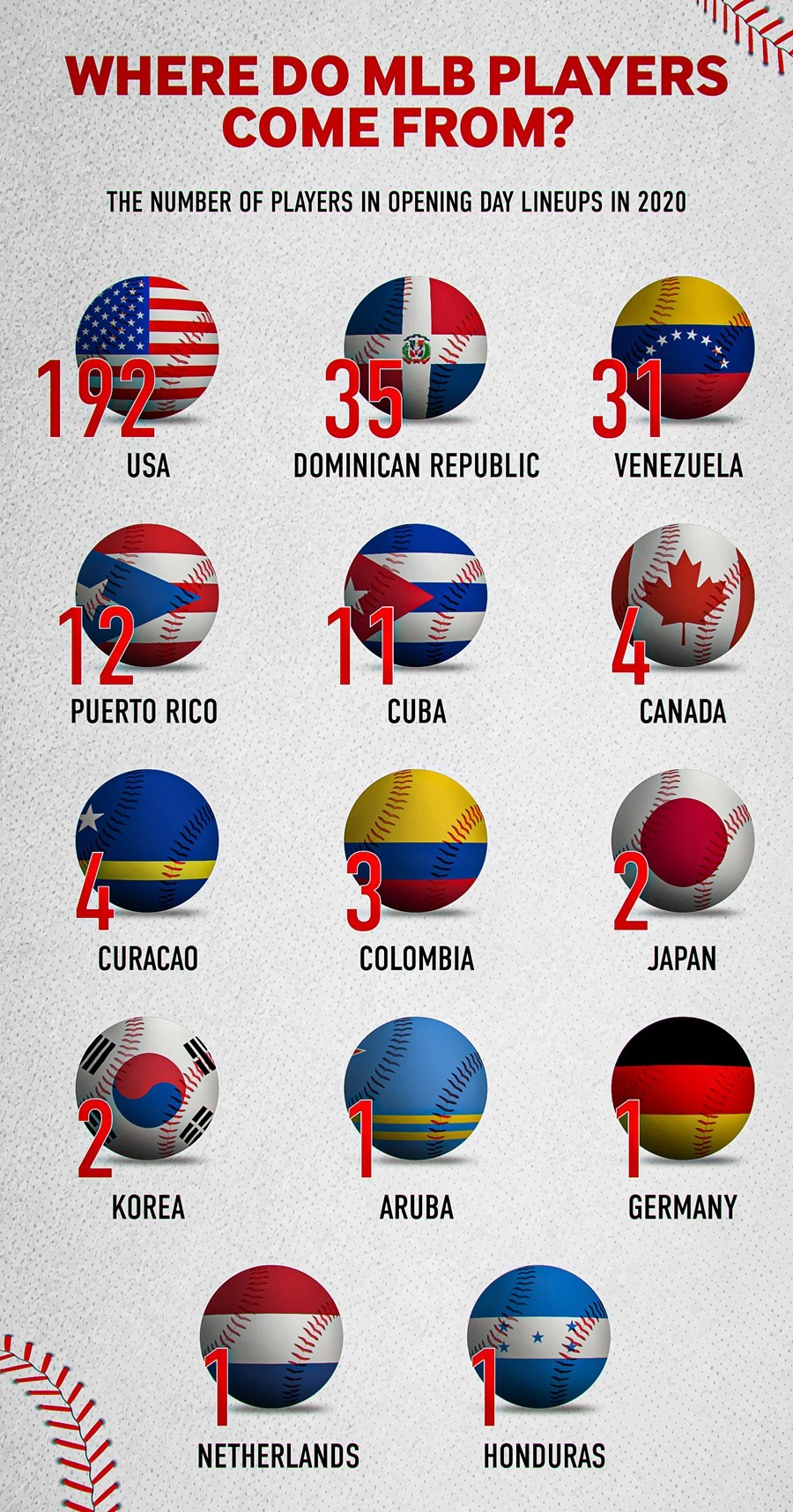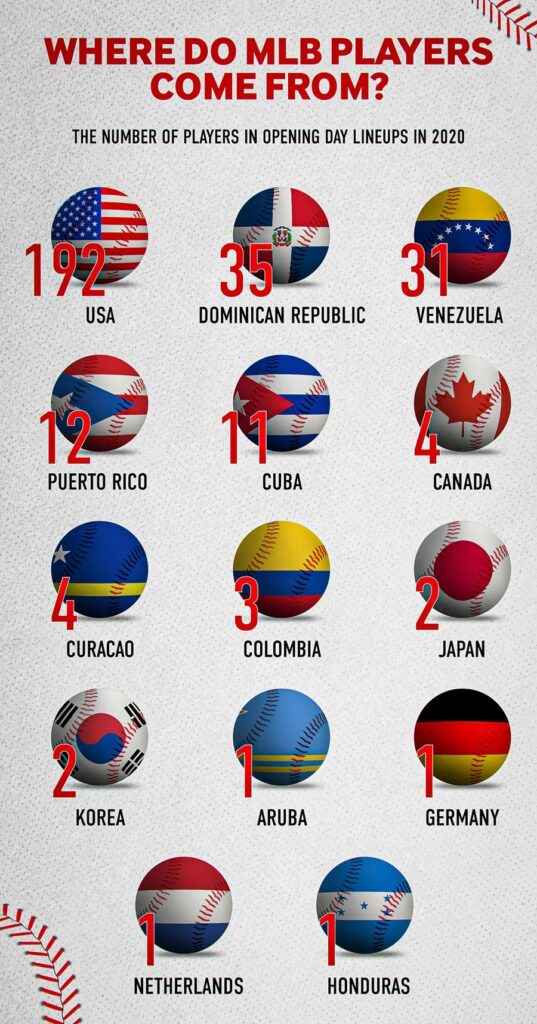Do you Really Know How Many Latin American Players are in Major League Baseball?

It’s hard to quantify the journey baseball has taken as America’s pasttime. Major League Baseball playoffs have been ongoing this year and Betway have positioned Los Angeles Dodgers as the half favorites to win this year’s edition of the World Series attributed to the massive talent they possess. But do we know how those rosters are constructed? Players from Puerto Rico,Cuba, Venezuela and Dominican Republic have been at the top of the sport in the recent past. With her rich past in the sport, USA continues to take the pole position in terms of the sheer quantity of baseball players in MLB. Still, the diverse sporting culture saw players from across the globe named to Opening Day lineups.
The USA fielded 195 players on Opening Day. To put this into perspective, Dominican Republic comes second with 35 players named to the same list, at 11.6%. Venezuela comes a close third with just over 10% representation by 31 players. Puerto Rico and Cuba managed to draw 12 and 11 players respectively. Other traditional baseball playing countries are Canada,Japan,South Korea, Colombia, Curacao, Aruba, Netherlands (Curacao), Germany and Honduras. The breakdown of each nation shown in the below graphic from Betway.

Apart from the aforementioned countries, Mexico, Nicaragua, Lithuania, Panama, Peru, Taiwan and Australia are also represented in the expanded 40-player roster.
What owed this magnificent transformation from the mono-ethnicity of yesteryear? In 1960,only 8.33 percent of players came from overseas, a figure that didn’t change much twenty years later; non-American players accounted for 10.48% in 1980. A decade later, 17.75% of players came from overseas and by the advent of the millennium 25.35% of players listed in the open day rosters were from overseas. There was no exponential growth ever since though. In 2020 though, 36% of players in the MLB are from overseas, a figure that translates to 108 players, of the 300 total players.
The exceptional milestones leading to this development have been captured since 1947, when Jackie Robinson broke the hurdle on race by becoming the first black player to play in the Major Leagues. He sparked a global reawakening pegged on equality for creed and colour. In 1951, Chico Carrasquel was named on the starting lineup for the All Star Game that year sealing another victory for Latin Americans. Then came Luis Aparicio, the Rookie of the Year, five years later. Zoilo Versalles got named as the Most Valued Player in 1965, a first for players born outside the USA. Roberto Clemente capped a great decade for Latin American players by winning the First World Series Most Valuable Player and getting awarded with an induction at the Hall of Fame, just two years later.
There was a huge price paid by the previous generation of players in order to stand out and that is the legacy that they passed on to the current crop of Latin American talent. The future looks promising for them with the Dominican Republic, Venezuela, and Cuba continually producing Major Leaguers. There is ostensibly, no shadow of doubt that the Latin Americans took this sport.
The sport is gaining popularity in Latin America, while it’s fading in the USA. Many Americans feel that basketball and football are their flagship entertainment sports. NFL and NBA notwithstanding, MLB continues to target the talent-laden Latin American countries, likely seeing it as an opportunity to acquire cheap labor.
















